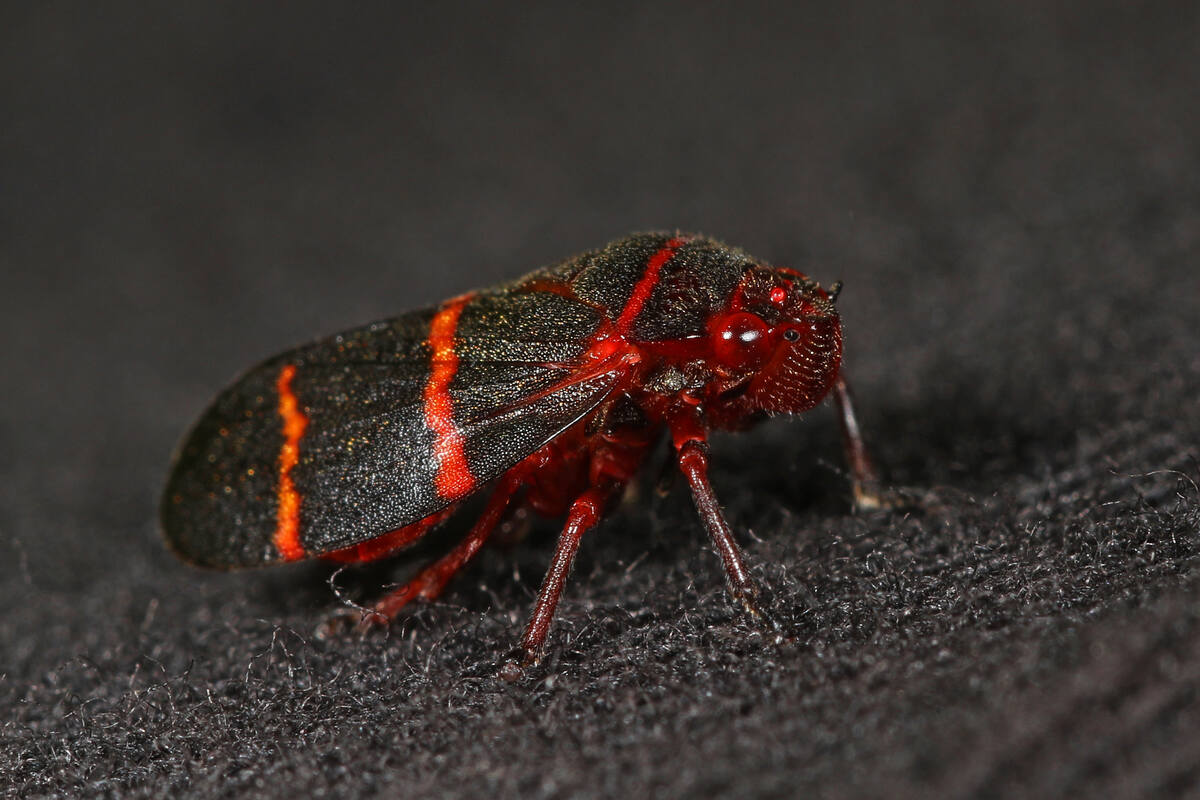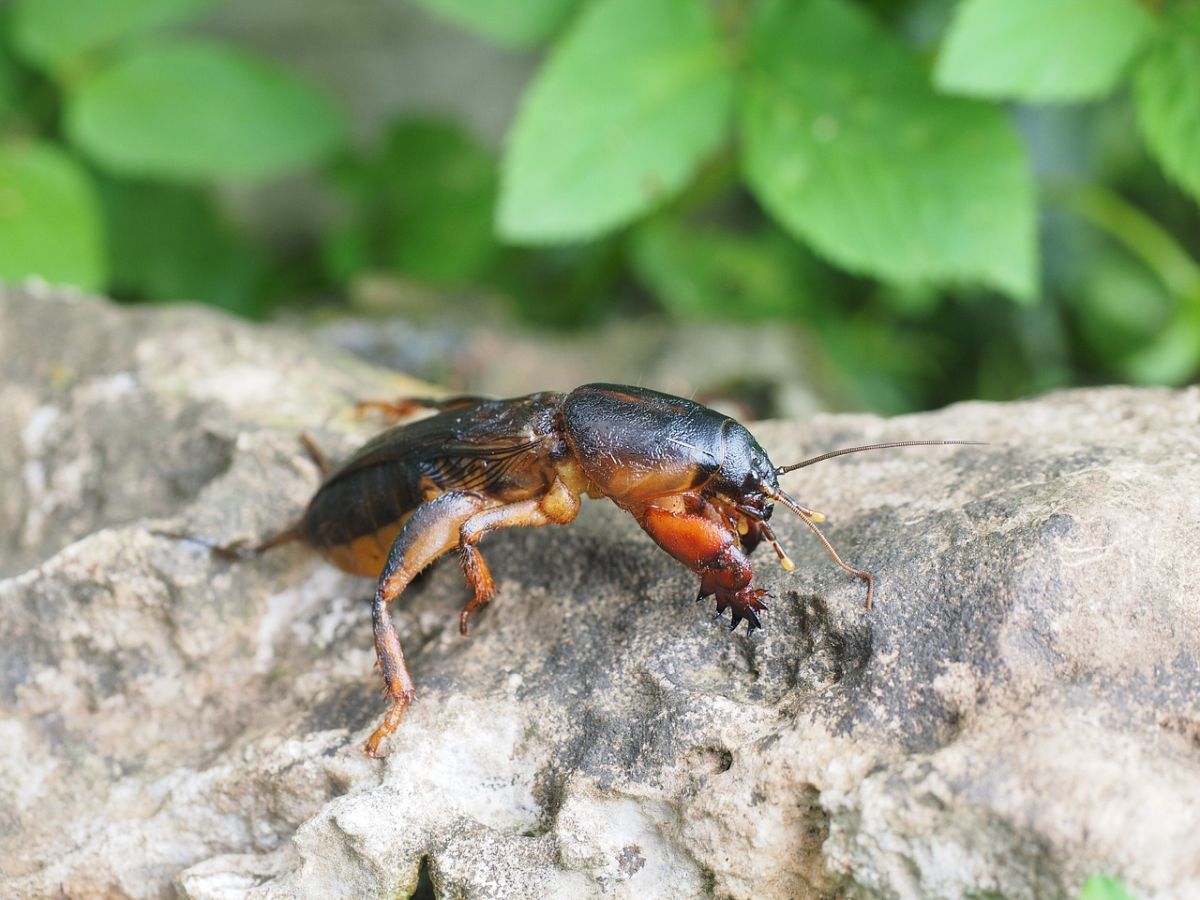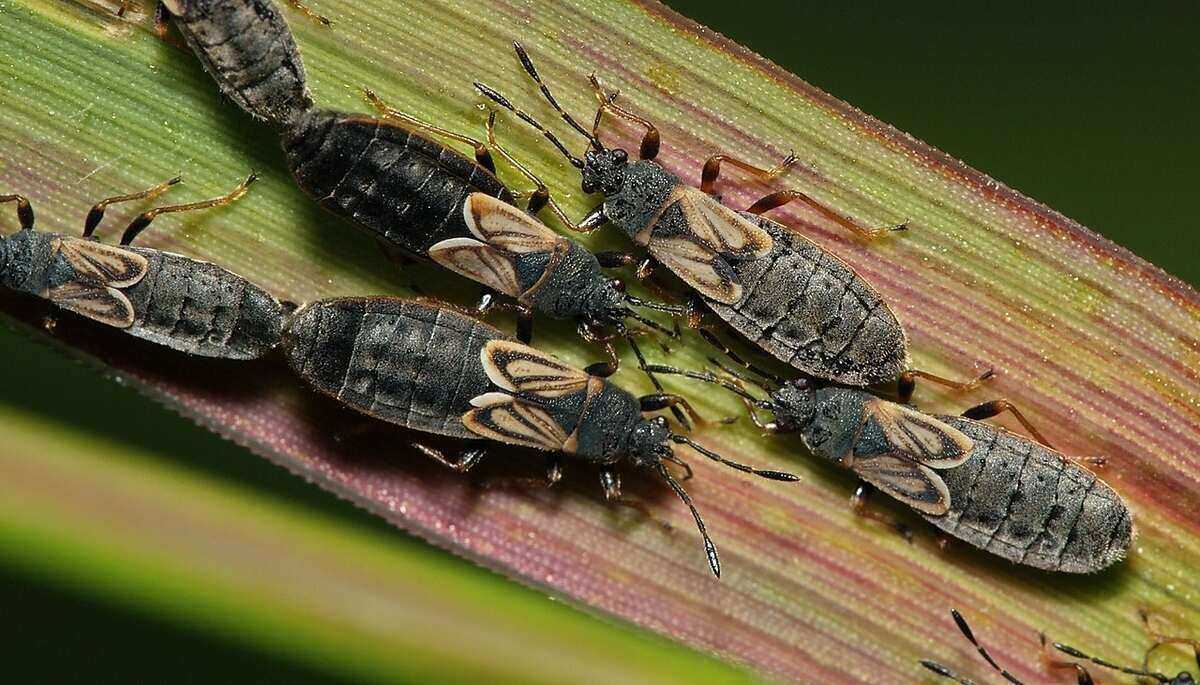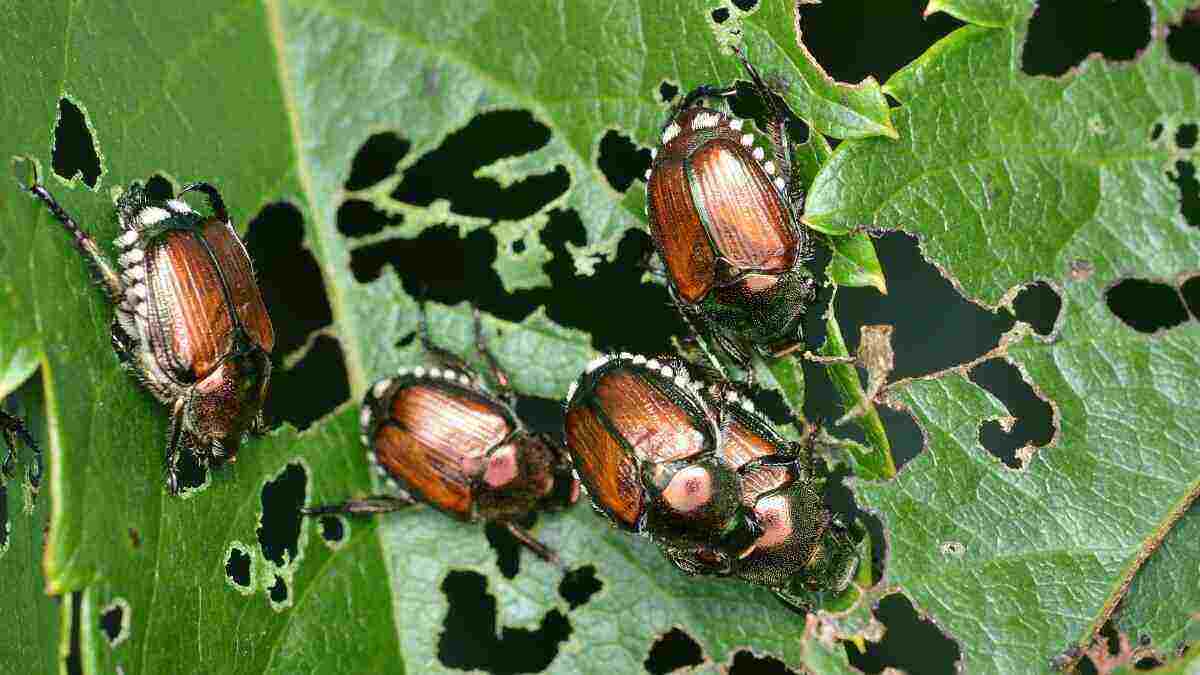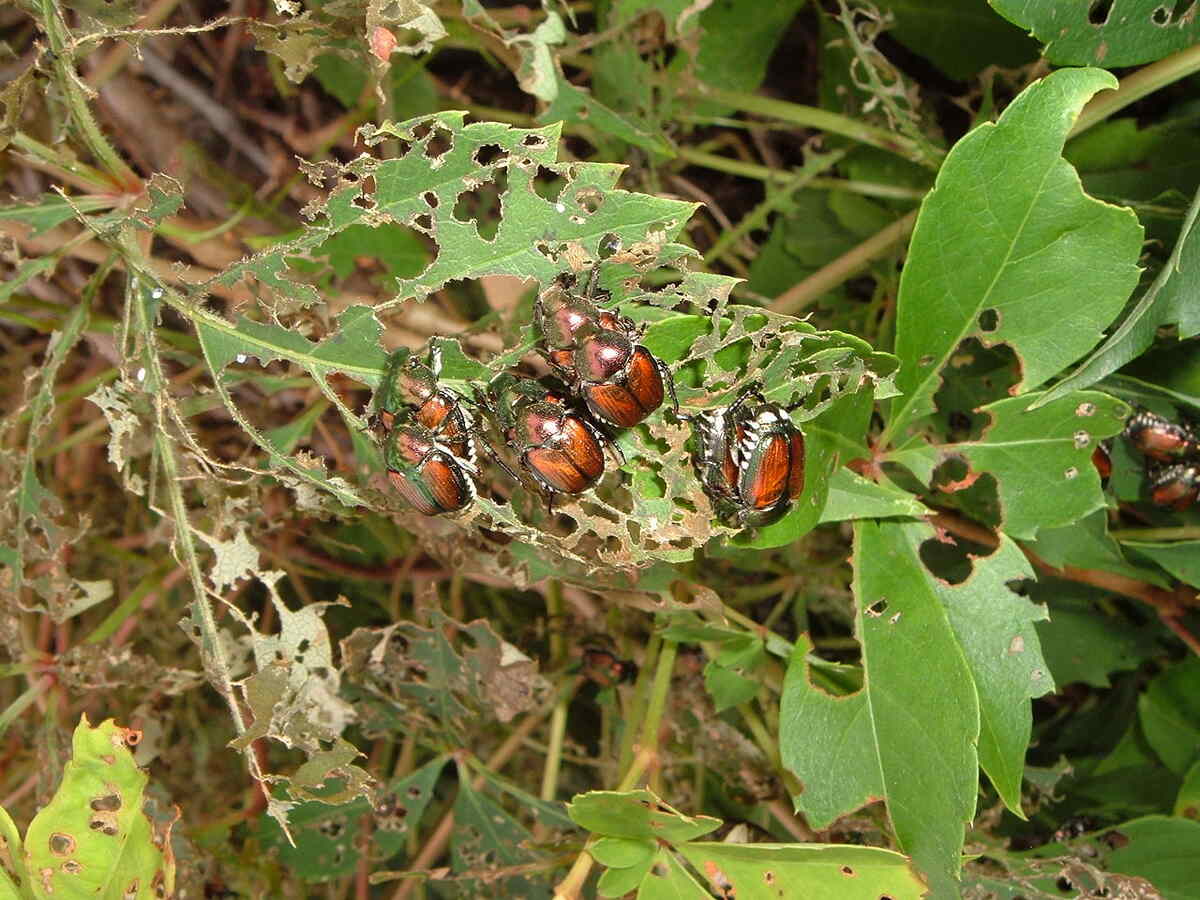
Keeping a healthy, green lawn in the Peach State takes more than watering and mowing correctly. There are some common lawn pests in Atlanta that can ruin your beautiful grass in a few days if the attack goes unnoticed. Here are the top seven critters to keep an eye on, how to spot them, and what you can do to prevent and combat infestation.
Read in this article about:
- Fall Armyworms
- Japanese Beetle Grubs
- Mole Crickets
- Spittlebugs
- Fire Ants
- Southern Chinch Bugs
- Whiteflies
- FAQ
1. Fall Armyworms
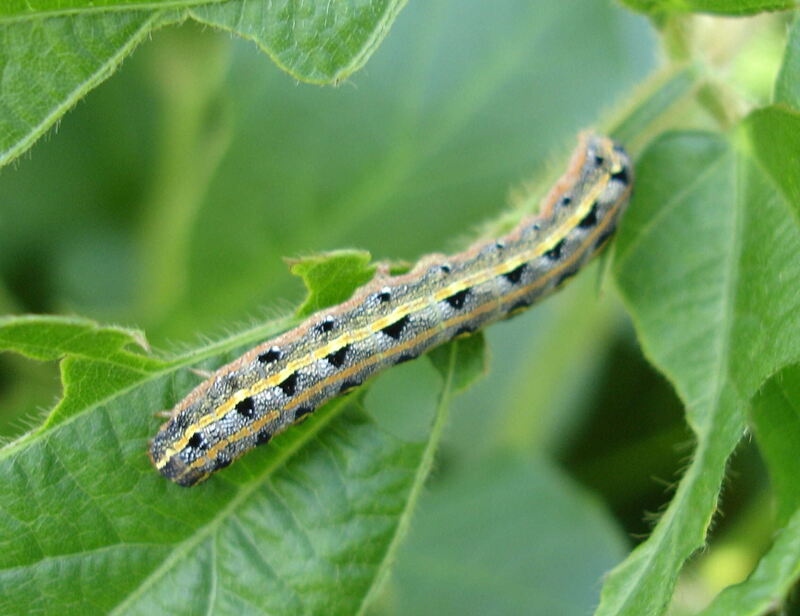
According to the University of Georgia, armyworms can turn a lawn from “perfect green to complete brown within 2 to 3 days.” This is one infestation you need to stop fast. Armyworm caterpillars are tan, green, or brown moth larvae, easy to recognize by:
- The inverted Y shape on their head.
- Colored stripes along their hairless body.
Their menace comes from numbers. Armyworms march in large groups, so damage happens quickly. The good part is they munch on leaf blades and rarely attack roots. Most lawns recover in a few weeks with proper watering and fertilization.
Preferred turfgrass: Bermudagrass and tall fescue. They also attack ryegrass, bluegrass, and bentgrass. Zoysiagrass is relatively resistant.
Active season: Late summer and fall
Infestation symptoms: Large areas of brown grass
Armyworms Prevention
Keep the lawn clean, adequately watered, and mowed. Aerate and dethatch once a year.
From early August to late September, check for tiny larvae. Look under the grass canopy on each side of the lawn every three weeks.
Enroll some beneficial insects to help you. Ladybugs, lacewing, and minute pirate bugs snack on armyworm eggs and larvae. Spice up your Atlanta yard with colorful flowering plants, and these helpful insects will come to protect it.
Testing for Fall Armyworms
If you’re unsure about armyworms’ presence, use the soap flush test to check:
- Mix three tablespoons of liquid soap in one gallon of water.
- Poor the mix on one square foot of lawn, and watch what happens.
- If you have armyworms, they should surface in a couple of minutes.
How to Get Rid of Armyworms
Depending on how large the infestation is, you can:
- Handpick the larvae and drop them in a bucket with soapy water.
- Spray neem oil on your lawn.
- Apply a pesticide like Carbaryl or Chlorantraniliprole to inhibit the growth cycle.
- Hire professional lawn care services for more radical pesticides that kill worms on contact.
Lawn Recovery After Armyworms
Recovery depends on the type of grass:
- Warm-season grasses recover easier, with proper watering and a good fertilizer.
- Cool-season grasses might need extra help, so consider overseeding if your Atlanta lawn is tall fescue or another cool-season grass.
2. Japanese Beetle Grubs
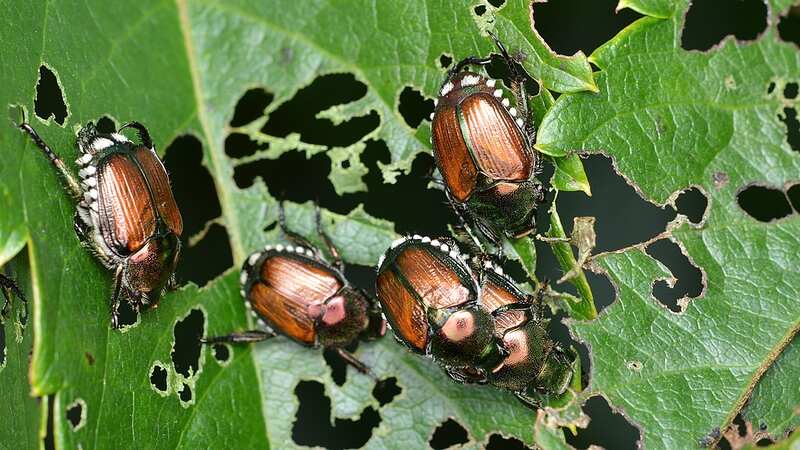
About a dozen types of white grubs pray on Georgia’s lawns, but Japanese beetles are the most common in the Big-A. Mature Japanese beetles are actually beautiful. With green metallic heads and copper-colored wings, they shimmer in the sun.
Their C-shaped larvae, on the other hand, enjoy chewing on turf roots, cutting off plants from nutrients and water. The grass turns brown and eventually dies.
Preferred turfgrasses: All grass types, flowers, leaves, and fruits of over 300 plants.
Active season: They are a summer lawn care problem, active from early July to late August.
Infestation symptoms:
- Brown patches of dry, dead grass.
- Areas where the turf can be rolled back like a loose carpet.
- Moles, birds, raccoons, and armadillos rooting up your lawn – they might be hunting for juicy grubs.
Japanese Beetle Grub Prevention
- If planting trees and shrubs, choose species that don’t attract Japanese Beetles. The best trees to consider for your Atlanta yard are dogwood, red maple, American holly, and magnolia.
- Add beautiful flowers like catnip, white chrysanthemums, and marigolds to deter white grubs.
- Mow taller to promote root growth.
- Keep the thatch to a minimum.
- Apply a preventive grub insecticide before the end of July to keep eggs from hatching.
Testing for Japanese Beetle Grubs
Lawn grubs live underground, so you must dig 1 to 2 inches deep to test for their presence. Cut one square foot of lawn on three sides. Then peel it up like sod and sift around the soil for grubs. More than 10 grubs per square foot indicate a severe infestation.
How to Get Rid of Japanese Beetle Grubs
- Hand-pick the grubs in the morning or evening when they are easier to remove. Throw them in a bucket with soapy water.
- Let natural Japanese beetle predators do their job, such as the parasitic wasp, ants, ground beetles, and nematodes.
- Apply milky spore to the lawn.
- If the infestation is severe, apply a pesticide or hire lawn care professionals to do this for you. The best time to kill Japanese beetles is early fall when they lay eggs on the soil surface.
Lawn Recovery After Japanese Beetle Grubs
Since these pests feed on the roots of your grass, the damaged plants can rarely be saved. After you get the grubs under control, clear the soil of dead grass and aerate. Spread starter fertilizer and seed the grass again when the weather is suitable.
3. Mole Crickets
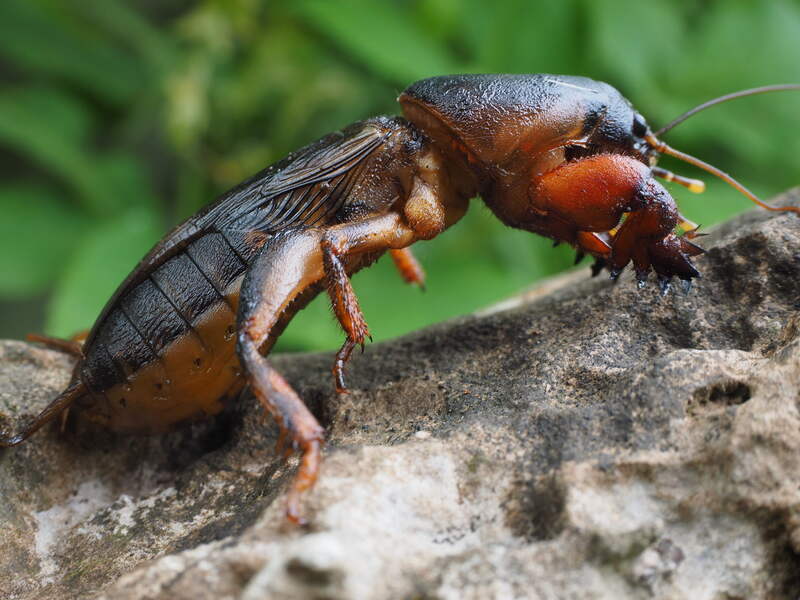
A common pest in the southeast U.S., mole crickets spend most of their lives underground. They damage turf by feeding on the plant root system, stems, and leaves. But the most extensive destruction is caused by them tunneling through the soil with their modified front legs.
Preferred turfgrasses: Bermudagrass, St. Augustinegrass, and Bahiagrass.
Active season: Mole crickets are active from early spring until late fall. They do the worst damage from March through June and late August to early October.
Infestation symptoms:
- Turfgrass starts to thin, then turns brown and dies.
- Thin, long mounds on the surface of the soil due to tunneling. They are easy to notice on bare spots, especially after rain.
- With severe infestation, the ground feels spongy when you walk on it.
- Birds, armadillos, and raccoons digging after cricket snacks.
Mole Cricket Prevention
Keep the lawn in good shape and dethatch once a year. With mole crickets, dethatching is essential. Thatch is a suitable habitat for insects that mole crickets like to eat. When you remove this food source, you make the lawn less attractive for mole crickets.
Also, crickets are attracted by outdoor lights. Keep them to a minimum.
Testing for Mole Crickets
Check for mole crickets’ presence using the soap test:
- Make a soap solution from 3 tablespoons of liquid soap and 1 gallon of water.
- Apply in a one-square-foot area.
- If present, mole crickets will surface.
How to Get Rid of Mole Crickets
What you do to get rid of mole crickets depends on the season.
- During spring, apply spot treatments where the lawn is severely affected. Also, consider mole cricket traps.
- Late June to early July is the best time to apply insecticide. Almost all the eggs have hatched, but the nymphs are still small.
Lawn Recovery After Mole Crickets
Since mole crickets go after the roots, you must reseed the lawn after an infestation. Remove the dead grass and level the ground. Add starter fertilizer and seed if the season is right.
4. Spittlebugs
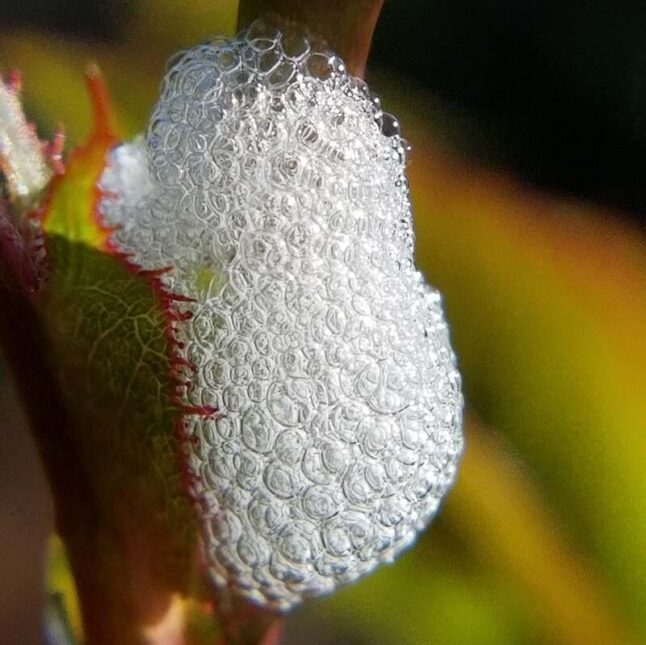
Two-lined spittlebugs are small, dark-brown insects with orange or red stripes on their backs. Since they love hiding in the grass, you rarely see them. More visible is the white foamy substance they secret to protect their nymphs.
Infested lawns show discolored turfgrass and brown patches. That is because spittlebugs pierce the grass blade, sucking out all the nutrients. They don’t kill the plants but leave them weakened and exposed to infections and other stress factors.
Preferred turfgrass: Centipedegrass, Bermudagrass, St. Augustine, Bahiagrass, and Zoysiagrass.
Active seasons: Early spring to early fall.
Infestation symptoms:
- Purple to brown streaks on the grass blades.
- Yellow or brown grass blades and dead plants.
- The telltale sign is the white, frothy spittle on turfgrass blades and stems close to the soil.
Spittlebug Prevention
Keep the lawn healthy with proper watering, mowing, and fertilization.
Reduce the spittlebugs’ habitat by dethatching infested areas and topdressing with sand.
Since reinfestation happens often, check your lawn regularly after treatment.
Testing for Spittlebugs
There’s no particular test for spittlebugs. Just walk on your lawn for a while. If there are spittlebugs in the grass, you’ll disturb them, and they’ll jump around.
How to Get Rid of Spittlebugs
Apply a spray pesticide after mowing and watering to maximize the effect. Do it late in the evening. This is when the insects go up on the grass blade and are more exposed.
Contact a professional pest control company if you are not sure what product to use.
Lawn Recovery After Spittlebugs
Fertilize the lawn to help the growth of new leaves. Keep thatch under control and water in the early morning to ensure good water absorption.
5. Fire Ants
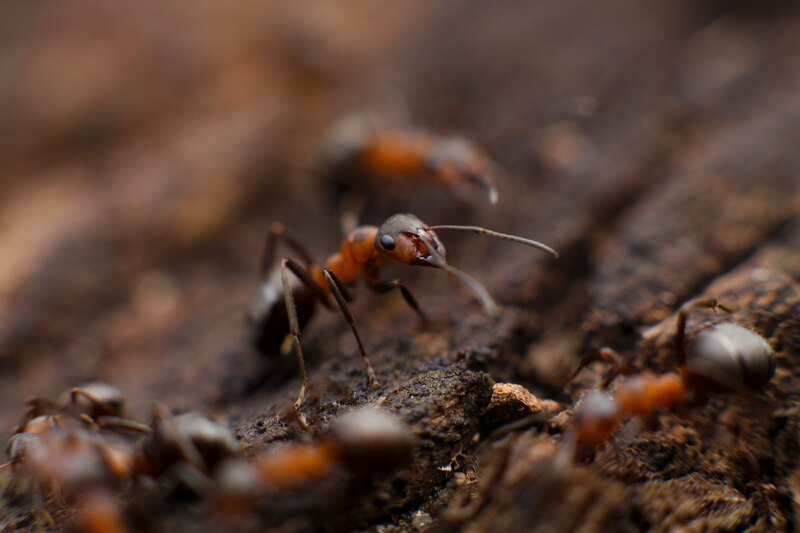
Reddish-brown in color and similar to regular ants, fire ants are way more dangerous. They prevent you from using the lawn safely, even in small numbers. Fire ant bites are painful, and the venom can lead to blisters and allergic reactions.
As for your beautiful Atlanta lawn, the damage is mainly mechanical and aesthetic. Fire ants build unpleasant mounds of dirt and destroy grass roots while working on their colonies.
Preferred turfgrass: Fire ants inhabit all types of Atlanta lawns.
Active season: Fire ants are common in A-Town during the entire picnic season, from May to October.
Infestation symptoms:
- Flat or dome-shaped mounds with no central entry point at the top.
- Dead grass around their colonies.
Fire Ant Prevention
Create a protective perimeter around the lawn. Use insecticides such as diazinon or chlorpyrifos (spray or granules). To stop them in their tracks, treat any fire ant mounds on the land around your lawn before they spread.
Testing for Fire Ants
Choose a suspicious mound in your lawn. Put on boots and long pants to avoid getting ants on your skin. Then use a shovel to destroy the mound. If hundreds of angry reddish ants rush out of the ground, you have a fire ant problem.
How to Get Rid of Fire Ants
Poor boiling water over individual anthills. Do it early in the morning, when ants are closest to the surface.
Use the two-step method for larger infestations:
- Spread fire ant bait over the lawn. It combines something tasty for the ants with insecticide. Ants take the bait into the colony. The queen eats it and dies or stops laying eggs. In time, the whole colony dies.
- Identify small mounds near the house, shed, walkways, or fence. Treat them directly with insecticide.
Lawn Recovery after Fire Ants
After eliminating the fire ants, level the ground and reseed the damaged grass.
6. Southern Chinch Bug
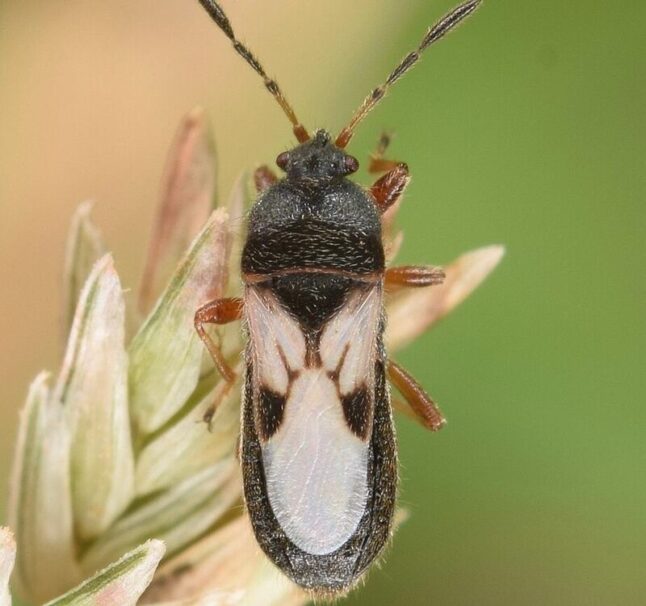
Of dark gray color and measuring 1/16 to ⅛-inch in length, chinch bugs often go unnoticed in the lawn. The damage they do is severe, but it’s similar to drought stress and often left unchecked.
Chinch bugs feed on the grass’s nutrients, leaving discolored and brown patches behind. They also secret a toxin that limits water absorption and grass feeding. The affected turfgrass eventually dies.
Preferred turfgrasses: Prefers St. Augustinegrass but also attacks Bermudagrass, centipede, Zoysiagrass, and Kentucky bluegrass.
Active season: Early spring to late fall.
Infestation symptoms: Brown patches of wilted or dead grass. The signs are often taken for drought stress or fungal disease.
Chinch Bug Prevention
Keep the grass healthy. Water and mow the lawn regularly.
Dethatching is an excellent way to prevent infestation. The chinch bug population grows within the layer of thatch, with few traveling along the grass canopy.
Plant trees and flowers that attract natural predators, such as the round beetle species and big-eyed bugs.
Testing for Chinch Bugs
Check the presence of chinch bugs on your A-Town lawn with the floatation test:
- Take a can or a 4-inch PVC pipe with the top and bottom cut off.
- Place it 3 inches deep into the soil where you suspect an infestation.
- Add tap water.
- If present, chinch bugs float to the surface.
More than three chinch bugs in the water is a sign to consider applying insecticide.
How to Get Rid of Chinch Bugs
Typically, pesticides such as pyrethroids, carbamates, and organophosphates are used to control these insects. Since chinch bugs develop pesticide resistance fast, it’s better to call a local pest company to decide the best treatment.
Lawn Recovery After Chinch Bugs
Their attack often kills the whole plant, so you must reseed or apply new sod. Plan it into your spring lawn care schedule or do it during fall, depending on the type of grass you have on your property.
7. Whiteflies
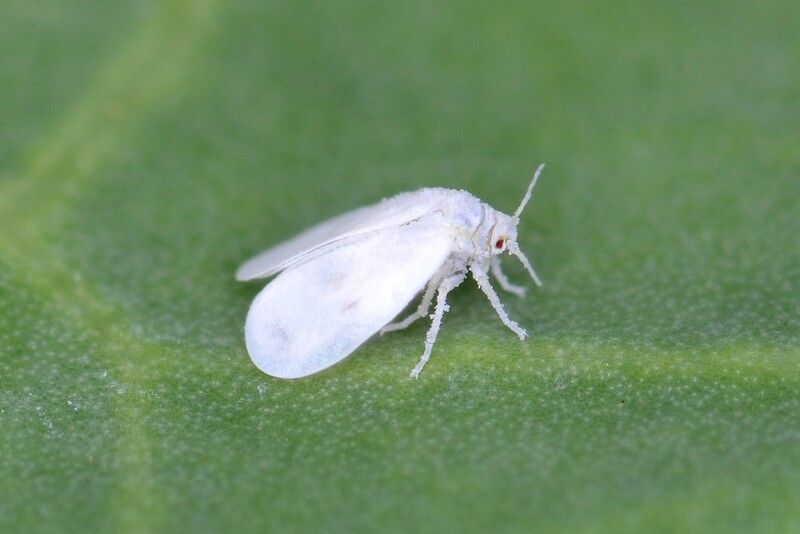
Whiteflies are tiny leafhoppers with delicate, milky wings that can easily conquer your yard. While they might look like moths, they are more like aphids in behavior.
Whiteflies suck plant juices from grass stems and leaves, leaving behind a honeydew that can lead to black sooty mold. They enjoy vegetable crops and decorative plants way more than grasses. If you find whiteflies on your lawn, the primary infestation is nearby. Check your flower beds or vegetable garden.
Preferred turfgrasses: All types of grass.
Active season: Late spring to early fall.
Infestation symptoms:
- Discolored, yellow to brown patches of wilted or dead grass.
- Swarms of tiny white bugs often fly off the grass canopy.
Whitefly Prevention
These tiny flies are best controlled with natural predators such as:
- Ladybugs
- Green lacewings
- Dragonflies
- Whitefly parasite wasps
- Hummingbirds
You can attract these predators with colorful flowering plants near your lawn.
Testing for Whiteflies
Check the backside of the grass blades for tiny white eggs and insects. The presence of ants and black sooty mold is also a giveaway.
How to Get Rid of Whiteflies
Spray with insecticidal soap in the early morning or evening. Repeat until the infestation is under control. You can make the solution at home from one part Castile soap and one part water.
Apply horticultural oils such as neem oil. They are also effective in preventing black sooty mold.
Use yellow sticky traps to capture whiteflies if there’s a small infestation.
Most homeowners are tempted to use pesticides. In this case, they might do more harm by killing the natural predators of the whitefly. An eco-friendly lawn care approach might have more success.
Lawn Recovery After Whiteflies
If whiteflies feed on your grass, you’ll need to help the plants with some fertilizer after pest control.
The secretions of these pests attract black sooty mold. Apply a preventive fungicide to keep this potential lawn disease under control.
FAQ About Atlanta Lawn Pests
If you keep a lawn in Atlanta, one nasty bug to watch for is the southern chinch bug. Small and easy to ignore, this bug feeds on grass blades, leaving behind a toxin that slowly kills the plants.
Treating a Georgia lawn after pest damage, weed infestation, or a lawn disease involves:
• Getting rid of the problem (weed, pests, or fungi).
• Watering and mowing the lawn correctly, considering the type of grass and seasonal rainfall.
• Fertilizing properly.
• Aerating and dethatching annually.
• Seeding the damaged areas.
• Applying preventive treatments.
The most common turfgrass across Georgia is Bermudagrass. Resistant to drought and high temperatures, it is easy to maintain and has a beautiful look most of the year. You’ll also find St. Augustinegrass, Zoysia, and centipede. Atlanta also has cool-season grass lawns such as tall fescue.
Heal Your Beautiful Atlanta Lawn Today!
Whether you live up north, in Woodstock, Johns Creek, or Alpharetta, or down south, in Woodbury or Greenville, Metro Atlanta lawn pests are a reality you need to deal with. They suck the life out of your grass, eat the roots, poison the plants, or make the turf an attractive prize for mold. Either way, you need professional help to fight the little buggers. Find an experienced lawn care company in the Atlanta area and heal your beautiful lawn today!
Main Photo By: Maxwahrhaftig / Wikimedia Commons / CC BY-SA 3.0
